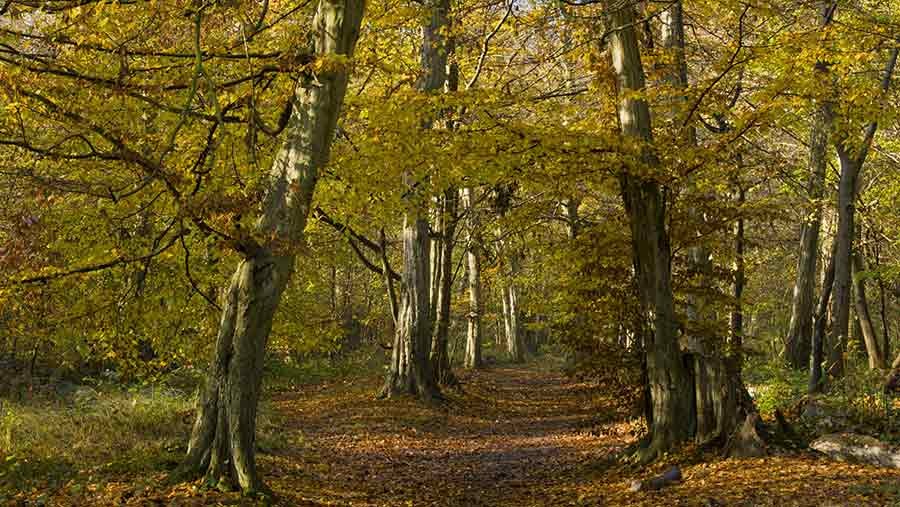
Wed, Sep 30, 2020 11:12 PM
Dear Peter,
I often see patches of woodland for sale. I’ve always rather liked the idea of owning my own wood, where we can take the kids for days out, maybe camp there, build a little hut, fish in a stream, hunt, and that going-back-to-nature sort of thing. It really appeals. Are there any other advantages of owning woodland, apart from the fun aspect?
Jenny Birch, Somerset
Indeed, Jenny, amenity woodlands are becoming increasingly popular; wood owners talk of picnics, campfires and walking their dogs. Some use them to shoot in, others to play paintball or sketch in, while some just let nature take its course. Very few think about the investment potential of these woods, although amenity woodlands have become so popular that when people decide to sell they often find they have made a nice profit. Priced per acre, they sell for far more than forests of commercial timber ready for felling. Depending upon volume, species and weight, commercial forests sell for between £1,000 and £3,000 an acre, while a patch of woodland bought for pleasure, which may well have no real timber value at all, is more likely to cost up to £4,000-£5,000 an acre. The south-east of England, as might be expected, commands the highest average prices, and South Wales the cheapest.
The best woods to buy for amenity purposes are those that contain what are called ‘mixed broadleaves’ – ash, oak, beech, your namesake birch etc – a nice smattering of different varieties of tree. The least attractive to the non-commercial purchaser are those swathes of all the same variety, whether they be Douglas fir, Sitka spruce etc, all planted in neat, easy-to-harvest rows. These are just dull, dark (not being deciduous) and dense. Ideally, look for a wood with a stream running through it or which banks onto a river. Don’t buy those on too steep a slope, but choose ones that contain flat areas that you can clear to create picnic areas.
Indeed, if you are looking for a solid long-term investment that needs little more than water and light to grow, you are right to consider picking up some woodland in Britain. Historically, the returns from owning timber have been excellent: between 1910 and today, timber has returned an average of 6.5%. Prices have been kept low in the UK due to cheap imports from the Baltic states over the past few years, but this pressure is now easing, making right now a good time to invest.
Many customers for timber - B&Q, for example - are beginning to insist that the wood they sell renewable source. Much of the imported timber is not, but domestic output is. At the same time, trees are a growth market: world consumption of wood products is estimated to rise at 1.7% a year, just as supply is being restricted by environmental and conservation issues.
There are other reasons why investors are turning to timber. Not only is it considered a socially responsible investment when well managed (trees store carbon as they grow and hence help reduce global warming), but as they are a living asset, you can harvest them when you want to. If prices are low, simply leave them to be harvested in better times - the beauty of the business is that trees continue to grow and increase in value regardless of market conditions.
In the UK there’s an extra bonus. Returns on woodland are free from both income and capital gains tax, and if you have owned the woodland for more than two years on your death, it is also free from inheritance tax as it will qualify for business property relief (as long as the woodland is run on a commercial basis). If you have owned it for less than two years, the inheritance tax can be deferred. But woodland is more than just a tax dodge; it can also be an excellent investment. Over time, both the value of your trees and land should grow and, in general, you can expect a return of about 5% a year from the sale of the timber. Woodland also comes with the added bonus of a large number of government grants for maintaining it.
There are, of course, risks. For starters, it is unquestionably a long-term play. There is also limited liquidity and few opportunities to sell; initial costs and commissions can be high (in the early years the maintenance costs of preventing damage, from deer disease or strong winds for example, add up); and there are also specific risks such as disease, bad weather and fire. But most of these dangers can he insured against or avoided through sound management. Woodland Brokers
Established nearly 40 years ago, John Clegg & Co has acted as agents in all sectors of the rural market. Nowadays it is the UK’s leading forestry agent. A range of other services include the valuation and sale of estates, a comprehensive search and acquisition service and negotiation of land access rights. The company has a comprehensive database of plots that are currently available for sale, ranging from small holdings in Cornwall to large Highland estates.
For details of woodlands for sale across the UK and the USA, contact John Clegg & Co





